Bioretention basins are stormwater treatment solutions which attempt to replicate the natural filtration process by using a combination of soil, plants, and microbes to treat the runoff stormwater before it is discharged to the environment. Since bioretention basins do not occur naturally, maintenance is essential to maximizing the effectiveness of the filtration over time. Additionally, routine maintenance increases the lifespan of the facility, improves aesthetics, and property value. A few of the main components that need to be monitored/maintained in a bioretention are the ground cover, sediment accumulation, biosoils, and the condition of the banks and stormwater structures.
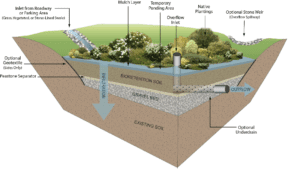
Cross Section of a typical bioretention basin
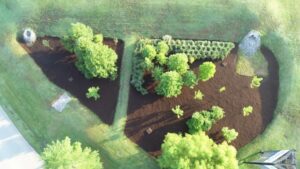
Aerial view of a bioretention system in Middle Tennessee.
The groundcover, or vegetation, of the bioretention is an essential component of the filtration process as it is the primary agent that drives pollution uptake. The vegetation type changes based on whether it is located at the interior or perimeter of the bioretention as does the purpose of the plants. Plants located at the interior of bioretention should consist of a variety of trees, shrubs, and perennials which should lead to a total of 80% coverage for the bioretention within two years. These interior plants will produce significant benefits to the bioretention system such as: minimizing erosion, enhancing infiltration, containing sediment, regulating temperature, controlling weeds, filtering pollutants, building soil, and aesthetic enhancement. The plants along the perimeter of the bioretention should consist of grass which helps maintain soil stability and keeps sediment from running off into the bioretention. It is important to note that the plants used in a bioretention basin aren’t just selected for their aesthetic qualities, but are carefully curtailed to thrive in the climate of a particular region and to the periodic wet conditions that exist in any bioretention basin.
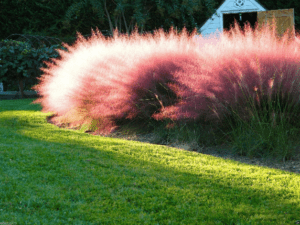
Pink Muhly Grass
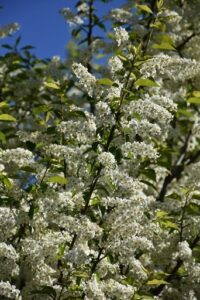
Chokecherry
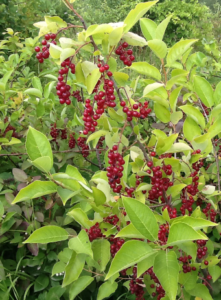
Chokecherry Berries
In the southeast, for example, there can be drastically varied weather throughout the growing season for plants. There can be periods of extreme heat and dry punctuated by heavy downpours of rain. Due to the extremes of conditions throughout the year many of the plants utilized in bioretentions basins are known for heartiness, drought/flood tolerance, as well as heat tolerance. Despite these climate conditions generally being true for the southeast, every site will be different with its own unique challenges, so it is important to have a professional come out to assess the site to ensure proper plant selection. There are sometimes resources, often provided by either a city, county or state, which will detail the approved native plants for use in the bioretentions of that area. The bioretention plant list will also give information about the individual plant’s light, moisture, and spacing requirements as well as their drought and flood tolerance capacity. Reviewing these lists provided by local governments, in conjunction with a deep knowledge of the conditions a plant will endure in the bioretention, can give a great starting point for figuring out plants that will both suit the environmental conditions of the bioretention but also add an aesthetic quality. Pink muhly grass is a great example of a grass which both fulfills the environmental conditions but also adds a lot of color to the bioretention. Red chokecherry is a great choice for a shrub or small tree as it is flood tolerant, likes sun-pt.shade, can endure both dry and wet conditions, and has white flowers which turn into colorful red berries to add visual appeal. As far as trees are concerned a red maple is always a great choice; it is both flood and drought tolerant, can endure sun or shade, as well as dry or wet, and in the fall the leaves turn an intense red/burgundy color.
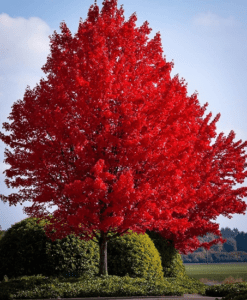
Red Maple in the Fall